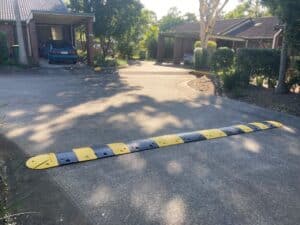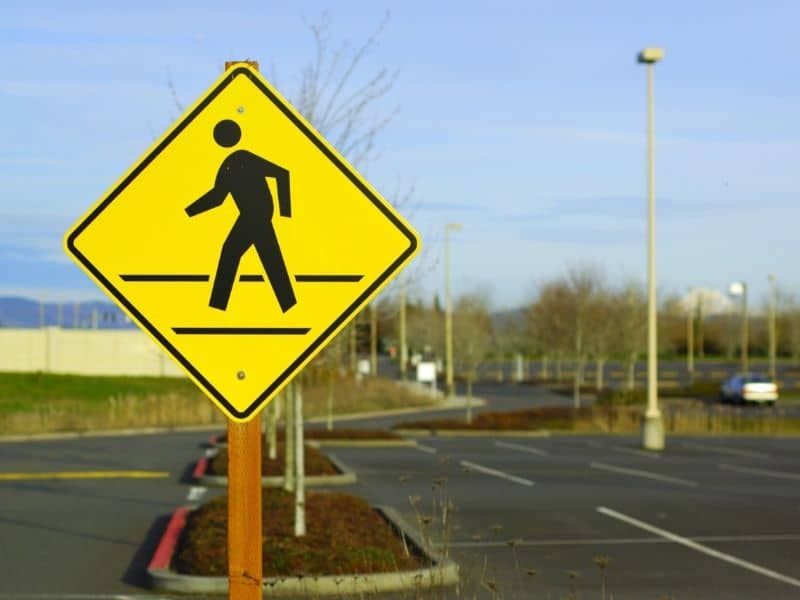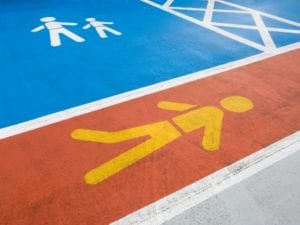

Pedestrians represent approximately 14% of the total national road toll, accounting for 174 fatalities in 2018. When you consider that over the last 10 years there has been a 24% increase in the number of registered vehicles in Australia, the possibility of accidents involving pedestrians seems likely to increase. The need to ensure that pedestrian safety is prioritised in urban planning and road design is therefore paramount.
Car parks are usually low-speed environments and may not immediately register as being a high-risk hazard zone. However, many off-road carparks, such as those provided by councils, private companies or service stations, often lack the necessary traffic calming measures. Car park pedestrian safety should be a primary consideration and thankfully there are some really simple measures you can put in place to reduce the risk of accidents.
When pedestrians and cars share zones, then good safety provisions are needed to keep pedestrians safe. Many motorists are blissfully unaware of how fast they are going and children, the disabled and the elderly are especially vulnerable sectors of the community liable to serious injury or even fatality.

A number of pedestrian safety issues have been identified with the current rules and standards applied to off-road car parks:
Often when developers design car parks they focus on providing a certain number of car parking bays and don’t take into account the actual design of the open spaces for pedestrians entering and exiting the facility, or make provisions for people with disabilities.
Most off-road car parks lack speed limit signs, give way signs or speed humps. Motorists, therefore, are unaware of their legal obligations on how to proceed through car parks. People that drive large vehicles such as 4WDs with limited rear vision are likely to expect pedestrians to give way to them, rather than vice versa.
Entry and exit points are particularly hazardous zones when it comes to pedestrian safety, especially when intersecting with a footpath directly in front of facilities. These are often not clearly signposted or don’t have speed control measures in place
When a car park is poorly designed or has a reputation for being hazardous, it can put people off using it, thereby limiting potential customers. Improving car park safety, therefore, is not only good for pedestrians it’s actually good for business.
When a car park is poorly designed or has a reputation for being hazardous, it can put people off using it, thereby limiting potential customers. Improving car park safety, therefore, is not only good for pedestrians it’s actually good for business. Take a look at our Speed Humps and Rumble Bars to ensure your carpark looking out for pedestrians.
This article was originally published on April 22nd 2015 and has been updated on 25th March 2021.
Disclaimer: Data in this article was obtained from the sources named below from the latest available data as at June 2020. Speed Humps Australia does not guarantee the accuracy or completeness of the data and accepts no liability whatsoever arising from or connected in any way to the use or reliance upon this data.
https://research.qut.edu.au/carrsq/wp-content/uploads/sites/296/2020/12/Pedestrian-Safety.pdf
http://www.parliament.vic.gov.au/images/stories/committees/rsc/pedestrian_safety/hearings/ARRB_Group_Ltd_presentation.pdf



For 10 years, our focus has been on one thing: to provide one style of product and to do it well.
Our wheel stops, speed humps and rumble bars meet Australian Standards, don’t fade, and we’ve never needed to replace one.

For 10 years, our focus has been on one thing: to provide one style of product and to do it well.
Our wheel stops, speed humps and rumble bars meet Australian Standards, don’t fade, and we’ve never needed to replace one.